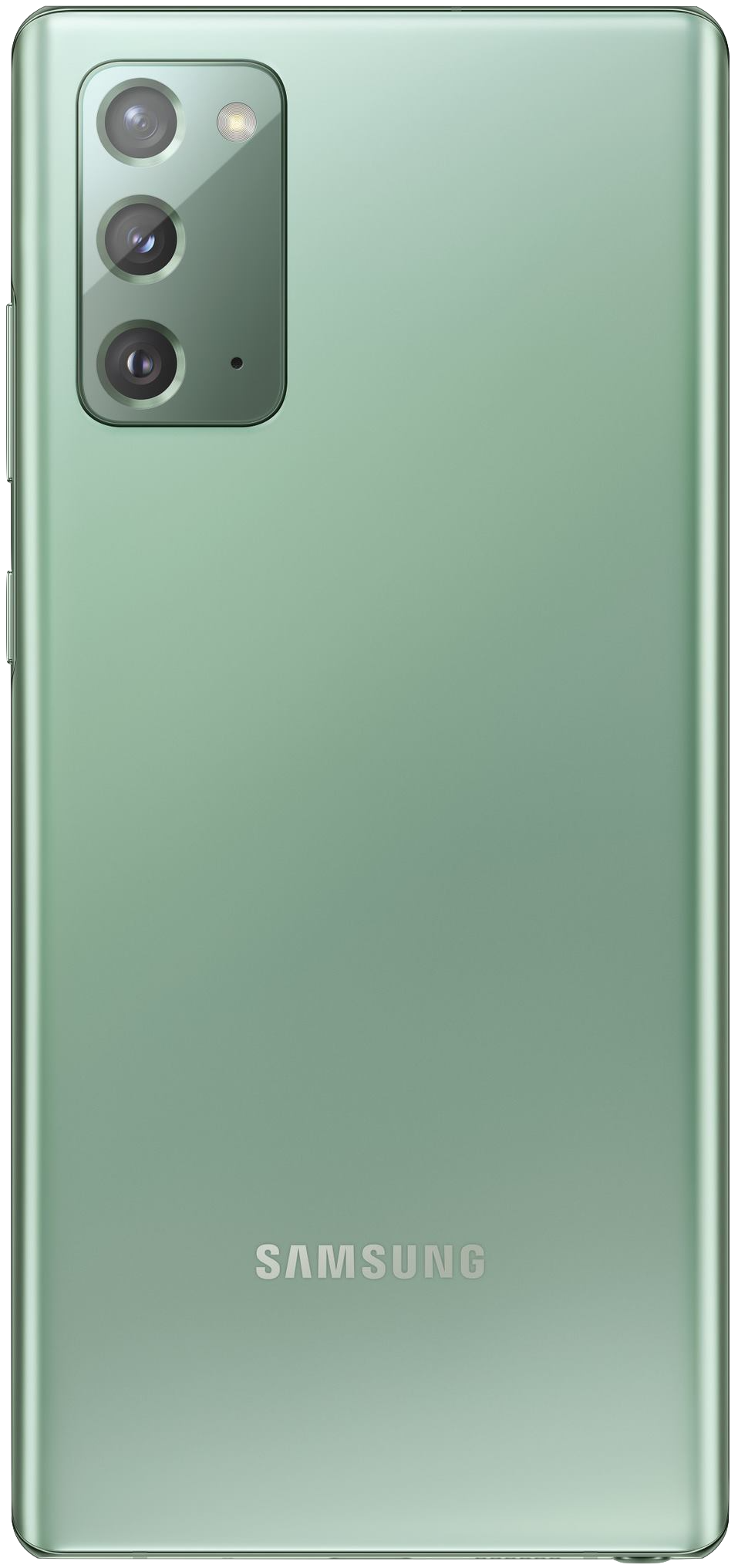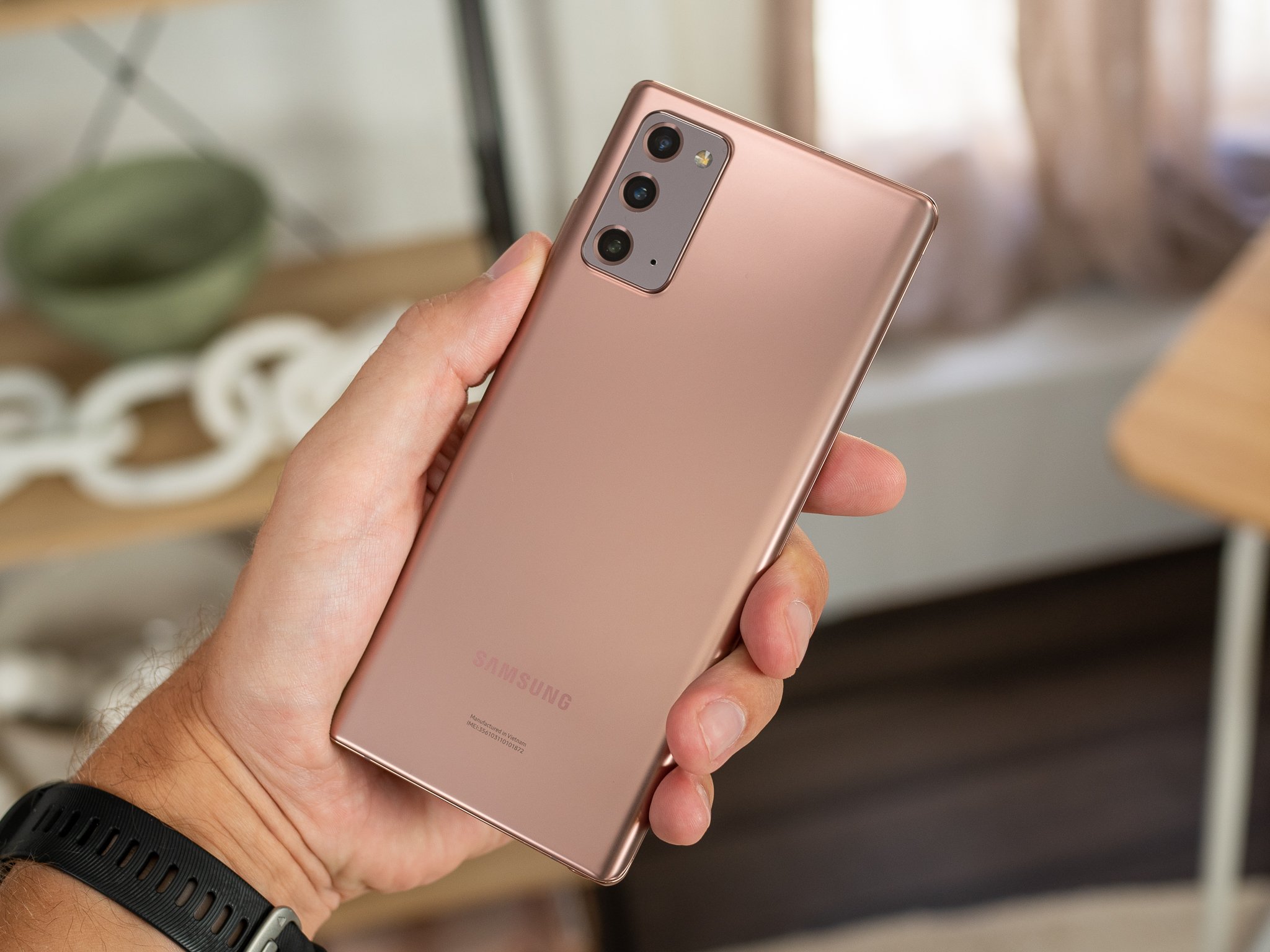Should you upgrade to the Galaxy Note 20 from the Note 10?
Best overall
Samsung Galaxy Note 20
Pros
- 5G connectivity
- Larger 4,300mAh battery
- One UI 2.5 brings a myriad of improvements
- Shoots 8K video
Cons
- Plastic body
- Display is still 60Hz and 1080p
- Expensive at $1,000
The Galaxy Note 20 may have a plastic backing, but it's an upgrade over the Note 10 in a number of ways, from the improved software to the larger screen and battery.
Hardly a downgrade
Samsung Galaxy Note 10
Pros
- Smaller, comfortable form factor
- Terrific design with glass back
- Readily available on discount
- Will eventually receive One UI 2.5
Cons
- No 5G connectivity
- Smaller battery capacity
Last year's Note 10 is still an excellent device, with a gorgeous AMOLED display and three versatile cameras. Its glass back feels premium, and the S Pen is just as great as on the Note 20.
Samsung's Galaxy Note series has always been its opportunity to throw every spec and feature imaginable into a phone, but in recent years, that reputation has changed a bit. With last year's Note 10 and Note 10+, Samsung bifurcated its lineup with a large, maxed out model bearing a Plus or Ultra suffix, and a more affordable variant that makes a few sacrifices to bring the S Pen to a lower price point.
Samsung Galaxy Note 20 vs. Note 10 What's changed?
The Galaxy Note 20 is a bit of a departure from many of the Note line's distinguishing design traits as of late. Rather than the glass backing we've come to expect from the Note 10 and earlier iterations, the Note 20 instead features a fully plastic backing.
The Note 20 moves to a plastic back and retains the 1080p 60Hz display.
Plastic isn't necessarily the premium material you might expect when you're spending $1,000 on a phone, but it's at least more durable than glass and still allows for wireless charging. Thankfully, the mid-frame is still made of sturdy aluminum.
In addition, the Galaxy Note 20 ditches its predecessor's squared-off corners for a more rounded design, more closely resembling Samsung's Galaxy S line, and it's the first Note device in years to feature a completely flat display. Depending on who you are, you may see this as a benefit or a disadvantage. After having personally experienced a frustrating amount of accidental touch input on the Note 20 Ultra's curved display, the flat display has a certain appeal to me.
That Super AMOLED Plus display is slightly larger and 25% brighter than the Dynamic AMOLED panel on the Galaxy Note 10. It looks fantastic, with the excellent color reproduction and brightness range that you'd expect from a modern Samsung device, though just like the Note 10 before it, it's still limited to 60Hz and 1080p, while the Note 20 Ultra has been upgraded to Quad HD+ and 120Hz.
| Category | Samsung Galaxy Note 20 | Samsung Galaxy Note 10 |
|---|---|---|
| Operating System | Android 10 | Android 10 |
| Display | 6.7 inches, 20:9 aspect ratio, 2400x1080 (393 ppi) resolution, Super AMOLED Plus | 6.3 inches, 19:9 aspect ratio, 2280x1080 (401 ppi) resolution, Dynamic AMOLED |
| Processor | Qualcomm Snapdragon 865+ | Qualcomm Snapdragon 855 |
| Graphics | Adreno 650 | Adreno 640 |
| Memory | 8GB RAM | 8GB RAM |
| Storage | 128GB | 256GB |
| Expandable Storage | No | No |
| Rear Camera | 12MP, ƒ/1.8 (wide-angle) 12MP, ƒ/2.2 (ultra-wide) 64MP, ƒ/2.0 (telephoto) |
12MP, ƒ/1.5/2.4 (wide-angle) 16MP, ƒ/2.2 (ultra-wide) 12MP, ƒ/2.1 (telephoto) |
| Front Camera | 10MP, ƒ/2.2 | 10MP, ƒ/2.2 |
| Battery | 4300mAh | 3500mAh |
| Dimensions | 161.6 x 75.2 x 8.3mm | 151.0 x 71.8 x 7.9mm |
| Weight | 194g | 168g |
One of the most significant hardware changes on the Galaxy Note 20 is its Sub-6 5G connectivity, a feature that was limited to a particular variant of the Note 10+ last year. While Ultra Wideband compatibility (which I'd still argue is largely impractical) is reserved for the pricier Note 20 Ultra, this certainly gives the Note 20 an edge over the Note 10.
Of course, the Note 20 also has the newer Snapdragon 865+ chipset inside, as well as a 4,300mAh battery that's 23% larger than the 3,500mAh cell in the Note 10. Interestingly, though, the Galaxy Note 10 comes with double the storage capacity, and neither phone has microSD-expandable storage.
Samsung Galaxy Note 20 vs. Note 10 Software and cameras
On the software side, you'll get Android 10 on either phone, with Samsung's One UI 2 software. The Note 20 operates on the slightly newer One UI version 2.5, which brings a variety of minor changes and improvements. Not only does One UI 2.5 finally bring support for Android 10's gesture navigation while using third-party launchers, but it also introduces a number of new features in Samsung Notes and other apps.
There are also a few improvements to the S Pen this year, namely a handful of new Air Actions called Anywhere Actions, which allow you to make small gestures with the S Pen to replicate the functionality of the on-screen Back, Home, and Recent Apps buttons. You can also use Anywhere Actions to initiate Smart Select and Screen Write. In addition, DeX has been updated with the ability to wirelessly cast the Note 20's display to a Micracast-compatible TV.
It's worth pointing out that many of these features will likely come to the Note 10 in future updates — especially since Samsung has announced plans to offer three years of software updates to the Note 10 and other devices in its lineup.
Both Galaxy Notes have similar camera loadouts, each with a 12MP main sensor, though the Note 20 drops the Note 10's dual-aperture system in favor of a constant ƒ/1.8. It also moves up to a 64MP telephoto camera, capable of up to 30x Super Resolution Zoom. In addition, the Note 20 is capable of shooting 8K video at up to 24fps, or 4K at up to 60fps. You can even use a Bluetooth microphone (like the Galaxy Buds Live) as a lavalier while shooting in Pro Video mode.
Samsung Galaxy Note 20 vs. Note 10: Which should you buy?
The Note 20 may not be the everything-but-the-kitchen-sink, fully maxed out phone longtime Note fans have come to expect, but save for the plastic backing, it doesn't make any downgrades coming from the Note 10. That doesn't necessarily mean you should upgrade if you already have a Note 10, especially considering most of the Note 20's new software features will eventually make their way to the Note 10, but if you're considering either option, the Note 20 is far from the worst choice.
Best overall
Samsung Galaxy Note 20
Glass isn't everything
The Galaxy Note 20 may have a plastic backing, but it's an upgrade over the Note 10 in a number of ways, from the improved software to the larger screen and battery.
Hardly a downgrade
Samsung Galaxy Note 10
Still a great phone
Last year's Note 10 is still an excellent device, with a gorgeous AMOLED display and three versatile cameras. Its glass back feels premium, and the S Pen is just as great as on the Note 20.
from Android Central - Android Forums, News, Reviews, Help and Android Wallpapers https://ift.tt/2Q9pYlg
via IFTTT




Aucun commentaire: